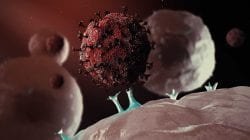Histone variant H3.3 mobility reflects parental chromatin organization in early mouse embryogenesis

Justin Chong, Biological Sciences, Summer 2021 Figure 1: Ribbon diagram of chromatin wrapped around a nucleosome. (Source: Wikimedia Commons) Embryonic development begins when a sperm cell fertilizes an egg, and they fuse together, forming a totipotent cell, which can give rise to the embryo and the placenta (Mitalipov & Wolf … Continue reading



